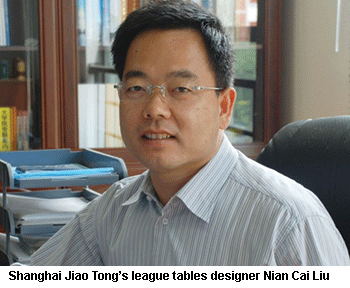 Earlier last month (May) Peking University played host to perhaps the grandest global gathering ever of the higher-education business. Senior figures from the world’s most famous universities — Harvard and Yale, Oxford and Cambridge among them — enjoyed or endured a two-hour opening ceremony followed by a packed programme of mandatory cultural events interspersed with speeches lauding ‘Xi Jinping thought’. The party was thrown to celebrate Peking University’s 120th birthday and less explicitly, China’s success in a race that started 20 years ago.
Earlier last month (May) Peking University played host to perhaps the grandest global gathering ever of the higher-education business. Senior figures from the world’s most famous universities — Harvard and Yale, Oxford and Cambridge among them — enjoyed or endured a two-hour opening ceremony followed by a packed programme of mandatory cultural events interspersed with speeches lauding ‘Xi Jinping thought’. The party was thrown to celebrate Peking University’s 120th birthday and less explicitly, China’s success in a race that started 20 years ago.
In May 1998 Jiang Zemin, China’s president at the time, announced Project 985, named for the year and the month. Its purpose was to create world-class universities. Nian Cai Liu, a professor of polymeric materials science and engineering at Shanghai Jiao Tong University, got swept up in this initiative. “I asked myself many questions, including: what is the definition of and criteria for a world-class university? What are the positions of top Chinese universities?”
Once he started benchmarking them against foreign institutions, he found that “governments, universities and stakeholders from all around the world” were interested. So, in 2003, he produced the first ranking of 500 leading global institutions. Nobody, least of all the modest Prof. Liu, expected the Shanghai rankings to be so popular. “Indeed, it was a real surprise,” he says.
People are suckers for league tables, be they of wealth, beauty, fame — or institutions of higher education. University rankings don’t just feed humanity’s competitive urges. They are also an important source of consumer intelligence about a good on which people spend huge amounts of time and money, and about which precious little other information is available. Hence the existence of national league tables, such as US News & World Report’s ranking of American universities. But the creation of global league tables — there are now around 20, with Shanghai, the Times Higher Education (THE) and QS the most important — took competition to a new level. It set not just universities, but governments, against each other.
When the Shanghai Jiao Tong rankings were first published, the “knowledge economy” was emerging in the global consciousness. Governments realised that great universities were no longer just sources of cultural pride and finishing schools for the children of the well-off, but the engines of future prosperity — generators of human capital, of ideas and of innovative companies.
Propelled by a combination of national pride and economic pragmatism, the idea spread swiftly that this was a global competition in which all self-respecting countries should take part. Thirty-one rich and middle-income countries have announced an excellence initiative of some sort. India, where world rankings were once regarded with post-colonial disdain, is the latest to join the race: in 2016 the finance minister announced that 20 institutions would aim to become world-class universities. The most generously funded initiatives are in France, China, Singapore, South Korea and Taiwan. The most unrealistic targets are Nigeria’s, to get at least two universities in the world’s Top 200, and Russia’s, to get five in the world’s Top 100, both by 2020.
The competition to rise up the rankings has had several effects. Below the very highest rankings, still dominated by America and western Europe — America has three of the THE’s top five slots and Britain two this year — the balance of power is shifting. The rise of China is the most obvious manifestation. It has 45 universities in the Shanghai Top 500 and is now the only country other than Britain or America to have two universities in the THE’s Top 30.
The rankings race has also increased the emphasis on research. Highly cited papers provide an easily available measure of success, and, lacking any other reliable metric, that is what the league tables are based on. None of the rankings includes teaching quality, which is hard to measure and compare. Shanghai’s is purely about research; THE and QS incorporate other measures, such as ‘reputation’. But since the league tables themselves are one of its main determinants, reputation is not an obviously independent variable.
Notwithstanding its downsides, the rankings race has encouraged a benign trend with far-reaching implications: internationalisation. The top level of academia, particularly in the sciences, is perhaps the world’s most international community. Researchers work together across borders on borderless problems — from climate change to artificial intelligence. They gather at conferences, spend time in each other’s universities and spread knowledge and scholarship across the world. Forced to publish in English, they share at least one language. They befriend each other, marry each other and support each other, politically as well as intellectually.
The rankings race is thus marked by a happy irony. Driven in part by nationalistic urges, it has fostered the growth of a community that knows no borders. Critics are right that governments and universities obsess too much about rankings. Yet, the world benefits from the growth of this productive, international body of scholars.



























